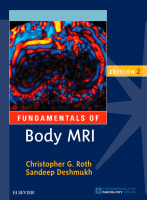Physical Address
304 North Cardinal St.
Dorchester Center, MA 02124

You’re Reading a Preview Become a Clinical Tree membership for Full access and enjoy Unlimited articles Become membership If you are a member. Log in here

▪ Prostate Anatomy The prostate gland is a walnut-shaped gland that sits in the base of the pelvis. The base of the gland is the broad superior portion and the apex is the narrow inferior portion ( Fig. 11.1 ).…

▪ Introduction The evaluation of the adnexa pivots on the unique spectroscopic capability of magnetic resonance (MR) to differentiate between lesions of different tissue composition, such as lipid (dermoid cyst), water (functional ovarian cyst), and hemorrhage (endometrioma). Improved tissue contrast…

▪ Introduction Magnetic resonance imaging (MRI) serves as the most comprehensive and conclusive imaging modality available to image the female pelvis. The inherent zonal anatomy of the uterus is exquisitely depicted as a function of the different water content and…

▪ Introduction Although computed tomography (CT) has been and still is the mainstay for imaging the gastrointestinal (GI) tract, small bowel and colorectal magnetic resonance (MR) applications have been developed and increasingly adopted in recent years. MR enterography evaluates the…

▪ Introduction Extreme sensitivity to the microscopic lipid—present in the form of cholesterol and cholesterol/lipid-based derivatives and adrenal adenomas—and the ability to detect other substances, such as hemorrhage, are the major reasons why MRI is so useful in adrenal imaging.…

▪ Introduction The tissue contrast and spectroscopic properties of magnetic resonance imaging (MRI) recommend its use as a problem solver for renal and urinary imaging. The unsurpassed ability to discriminate cystic from solid lesions and higher sensitivity to solid, neoplastic…

▪ Pancreas Anatomy and Function The pancreas is a nonencapsulated organ of the digestive system located within the retroperitoneum, posterior to the stomach and anterior to the spine. The pancreas is approximately 2 inches wide and 6 to 8 inches…

▪ Gallbladder Anatomy The gallbladder is an ovoid cystic organ along the undersurface of the liver at the interlobar fissure, between the right and the left lobes of the liver. Although the size and shape of the gallbladder vary with…

▪ Introduction Diffuse liver processes range from incidental signal and/or enhancement derangements, such as steatosis or transient hepatic intensity differences (THIDs), to serious, and potentially end-stage parenchymal disorders, such as cirrhosis and Budd-Chiari Syndrome (BCS). Segmental, or geographic lesions typically…